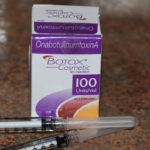Injectable treatments have become mainstream due to their effectiveness and ease of use. Their growth is also fueled by the use of a growing and diverse base of injectors from every physician specialty to nurses and medical assistants. The other unspoken and forgotten reason for injectable treatment growth is their off-label uses. Botox and injectable fillers have been granted very specific indications by the FDA and are much more restrictive than what they are actually used for today.
Botox and Dysport has FDA indications only for glabellar wrinkles while injectable fillers has an FDA indication for nasolabial (lip-cheek groove) reduction only. Yet everyone knows that Botox and Dysport are widely used and advertised for forehead and crow’s feet wrinkles and injectable fillers are put in as many lips as it is in the nasolabial folds. How can this be? This is the common practice of ‘off-label’ use, which is misunderstood by many physicians and most patients.
Contrary to popular perception, the FDA does not really approve a medical product for anything. Receiving product clearance by the FDA means that is has evaluated the safety and effectiveness of the product for a very specific purpose. This seems like it is splitting hairs from the concept of approval but it is different. It clears a product based on the evidence (studies) that was submitted to it for evaluation. This also indicates to the manufacturer how it can and cannot market the product. They are not legally permitted to say that a product works for something when it is not an indication that has been cleared.

The off-label use of aesthetic neuromuscular toxins and fillers is common practice. Such uses probably make up more than half of all such product uses and sales. Physicians can widely use these products for a diverse number of facial indications based on their medical judgment and discretion. Manufacturers are bound by FDA regulations based on their product’s indication clearances.
While off-label uses of these aesthetic products is widely done, that does not mean they are necessarily as effective as they are for on-label indications. Patients should be aware when they are receiving an off-label use of a product and, thus, no assurances can be made as to its absolute effectiveness for this indication.
Dr. Barry Eppley
Indianapolis, Indiana


